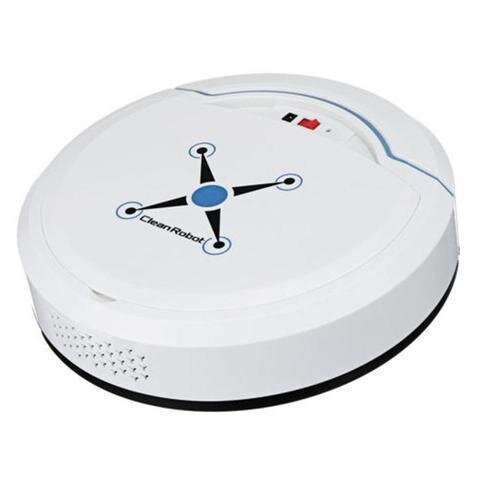In the era of automation, robots are transforming everyday tasks—from vacuuming floors to mowing lawns. One particularly innovative solution is the robot window cleaner, a device designed to clean glass surfaces without manual effort. These smart gadgets have emerged as a game-changer for both residential and commercial users, especially for hard-to-reach windows or large glass installations. As demand for convenient, efficient, and safe cleaning methods rises, robot window cleaners are gaining traction around the world.
What Are Robot Window Cleaners?
Robot window cleaners are compact, motorized devices that use suction or magnets to adhere to glass surfaces. Once attached, they move across the pane using a combination of wheels, tracks, and cleaning pads. Controlled via remote, smartphone apps, or automated routines, these machines are capable of cleaning windows of various sizes and orientations—including vertical, framed, frameless, or even slanted glass panels.
Most window cleaning robots come equipped with microfiber pads, a motorized cleaning mechanism, and intelligent navigation systems that detect edges and obstacles. Advanced models may include sensors, gyroscopes, AI-driven path planning, and even voice control compatibility.
How Do They Work?
While different brands and models have their own proprietary technologies, the basic operation follows a similar sequence:
- Attachment: The robot uses either vacuum suction or magnetic force to adhere to the window. Vacuum-based models are more common due to their ability to work on single panes without a magnetic counterpart on the other side.
- Navigation: Using sensors and pre-programmed algorithms, the robot scans the window’s size and shape. Edge-detection prevents it from falling off frameless windows.
- Cleaning: As it moves, microfiber pads scrub the glass while a spray mechanism dispenses cleaning solution. Some models have dual pads—one for scrubbing and one for polishing.
- Completion and Return: Once finished, the RoboMaidz may return to its starting point or stop automatically, waiting for user retrieval.
Most units also include a safety tether or rope to prevent damage or accidents in case of a power failure or suction loss.
Advantages of Robot Window Cleaners
1. Convenience and Time-Saving
One of the most appealing features of robot window cleaners is the hands-free operation. Users can start the cleaning process with a button press or voice command and attend to other tasks while the robot does the work.
2. Safety
Cleaning high or hard-to-reach windows can be risky. Robot cleaners eliminate the need for ladders, scaffolding, or leaning out of windows, thus reducing the risk of falls or accidents.
3. Consistent Cleaning Quality
Thanks to automated routines and pressure-sensitive pads, robots maintain consistent pressure and motion throughout the cleaning process, often leading to streak-free results.
4. Versatility
Modern window cleaning robots are not limited to windows. They can also clean mirrors, tiles, glass doors, and even solar panels, making them multi-functional.
5. Eco-Friendly Options
Some models are designed to use minimal water and eco-friendly cleaning agents, aligning with sustainable cleaning practices.
Limitations and Challenges
Despite their many benefits, robot window cleaners are not perfect. Some common limitations include:
1. Cost
High-quality models can be expensive, especially those with advanced navigation and safety features. Budget-friendly options might lack reliability or cleaning power.
2. Dependence on Power
Most units need to be plugged in, although some come with battery backup. In areas without reliable electricity, this can be a drawback.
3. Manual Setup
While cleaning is automated, users still need to attach the robot, set boundaries, and occasionally refill cleaning fluid or change pads.
4. Performance on Very Dirty Windows
Robot cleaners are ideal for routine cleaning. For windows with heavy grime, manual pre-cleaning may still be necessary.
5. Noise
Although not overly loud, the sound of motors and suction can be noticeable, especially in quiet environments.
Popular Models on the Market
Several manufacturers have made a name for themselves in the window-cleaning robot market. Some of the most popular models include:
- HOBOT Legee 688 & 298: Known for their powerful suction and AI path planning, these models support smartphone control and voice commands.
- Ecovacs Winbot X: A cordless, battery-operated robot that offers flexibility for outdoor windows and unique locations.
- Gladwell Gecko: A budget-friendly option offering basic features suitable for small apartments and light cleaning.
- Sophinique X5: Offers both remote and app control with a strong vacuum system, ideal for larger windows.
Each brand has its strengths, so the best choice depends on the user’s budget, window type, and desired features.
Use Cases: Residential and Commercial
Robot window cleaners cater to both home users and businesses:
Homeowners
For apartment dwellers, especially in high-rise buildings, robot window cleaners offer a safe way to keep windows spotless. They’re also helpful for large patio doors, glass partitions, and mirrors.
Businesses
Retail outlets, office buildings, hotels, and showrooms with expansive glass surfaces can benefit from robotic cleaning. While some may still rely on professional window washers for exterior façades, robots reduce the frequency and cost of manual cleaning.
Maintenance and Tips
To get the best results from a robot window cleaner, users should follow basic maintenance:
- Clean the pads after each use to prevent streaks and residue.
- Check suction components regularly to ensure optimal performance.
- Avoid using on rainy or foggy days as excess moisture can interfere with adhesion.
- Store the robot in a dry, dust-free location to extend its lifespan.
Future Trends
The future of robot window cleaners looks promising, with developments in AI, battery technology, and smart home integration. We can expect:
- Fully wireless models with longer battery life and rapid charging.
- Voice assistant compatibility (e.g., Alexa, Google Assistant) for better home automation integration.
- AI-powered grime detection to tailor cleaning intensity to surface conditions.
- Multi-surface robots that adapt automatically to windows, walls, and floors.
As prices decrease and technology becomes more sophisticated, adoption rates are likely to increase, particularly in smart homes and eco-conscious households.
Conclusion
Robot window cleaners offer a compelling blend of convenience, safety, and performance. While they may not fully replace manual cleaning in all scenarios, they are an excellent addition to any modern home or office. As the technology continues to evolve, these robots will likely become as ubiquitous as robotic vacuums—saving time, reducing effort, and keeping our environments sparkling clean.































